Papers by patrizia fortini

Rendiconti lincei. Scienze fisiche e naturali, May 10, 2018
Lot of ancient cities born "around" a water spring; Be'er Sheva, the city of seven wells, ןייעמ... more Lot of ancient cities born "around" a water spring; Be'er Sheva, the city of seven wells, ןייעמ ןוחיגה the Gihon in Jerusalem, Sulukulekap the Water-Tower Gate of Constantinople, the Kallirroe in Athens (born of Nymphs divinity), the Peirene in Corinth are some examples but surely Rome must be considered one of the city richest of springs. Thank to the presence of Tiber, from 1000 B.C. Romans had a great availability of water sources, 23 historically identified up today. The demographic increase (someone talks about more then 1 million citizens in the golden age) has led to a greater demand for water; so, in 312 B.C., the first Romans aqueduct was constructed and the water sources inside the Forum (cultural and government centre of Rome), as Juturnae, Tullianum, Lacus Curtius, became sacred. This paper treats a research inserted in a wider project aiming to compare different spring waters emerging in the area of the Roman Forum (Rome, Italy). In particular, data from in situ (Temperature, pH, Conductivity) and in-lab (anions and cations content) measures obtained in two campaigns in 2017, that compare nine sources and two nearby standpipes, are reported and discussed. From the preliminary results, the sacred springs seem quite different from Roman's supply water; unfortunately, today, they are only resurgence, and in some cases, the flow is so low to be difficult to measure. The microbiological quality and a continuous monitoring of at least one of the sources will be the next step of the research project.

Journal of Archaeological Science, Apr 1, 2001
The construction age of the Tullianum, the oldest portion of the Carcere Mamertino (Mamertine Jai... more The construction age of the Tullianum, the oldest portion of the Carcere Mamertino (Mamertine Jail), the early Roman execution site, is not known. Identifying the provenance of the building stone used to construct the Tullianum can aid in determining the approximate age of the structure because the introduction of different types of building materials occurred at known times. The 40 Ar/ 39 Ar age of the rock used to construct the Tullianum is 36 1 ka, indicating that it is Lapis albanus, which crops out only on the flanks of the Alban Hills volcano approximately 20 km from Rome. Based on the general belief that the introduction of Lapis albanus as a building stone did not occur before the 4th century , we interpret that the Tullianum was built, or rebuilt, after this time. This age conflicts with the architectural style of the Tullianum, which matches that of ancient cisterns, believed to date to the 7th or 6th centuries . This younger age for the Tullianum suggests a unique history for this building, perhaps tied to ancient religious rituals.
Contributo alla pubblicazione del CIL, XVII
Epigraphica: periodico internazionale di epigrafia, 1990
Acceso de usuarios registrados. Acceso de usuarios registrados Usuario Contraseña. ...

Environmental Science and Pollution Research, Apr 4, 2017
In the last decades, the very fast improvement of the analytical instrumentation has led to the p... more In the last decades, the very fast improvement of the analytical instrumentation has led to the possibility of quickly and easily getting a lot of data; in turn, the need of advanced statistical methods suitable to extract the full information furnished by instruments has increased. Such kind of data treatments is particularly important in any case of continuous monitoring of one or more parameters, so the microclimate monitoring is a typical example for this application. Microclimate control is essential in the conservation of Cultural Heritage (CH), but decisions on optimal conservation parameters cannot base only on existing norms that do not take into account the environment's history. Often CH has survived for many centuries in conditions that must be considered risky but also a stable state (equilibrium) resulting from a long adaptation process during which a more or less heavy damage occurred to the materials. Any successive midity and, in turn, to a worsening of the conservative conditions. Surely, a monitoring of particulate matter, correlated to air fluxes and, in turn, to microclimate, is of fundamental importance for the conservation of frescoes and will be object of one of our future diagnostic interventions in the site.

Chemistry Central Journal, Sep 18, 2012
Background: This paper discusses results obtained in the second monitoring campaign of the Carcer... more Background: This paper discusses results obtained in the second monitoring campaign of the Carcer Tullianum, a particular hypogeum environment located in the historical centre of Rome (Italy). In the first paper we stressed the need to apply chemometric tools to this kind of studies in order to obtain full and significant information; really information on sampling design, sensors (type, number, position) and instrument validation seems to be not easy to find in literature for researches dealing with monitoring of indoor environments. Also in this case three main parameters (temperature, humidity, illuminance) were monitored in the complex construction by an inexpensive self-assembled system along some horizontal and vertical vectors together with some measurements of oxygen, carbon dioxide and barometric pressure. With respect to the first campaign, we used a higher number of sensors to cover a new excavated zone; for the same reason, as well as to take into account the presence of visitors, a different experimental design was adopted. Results: Different data treatments were applied to data coming from all the used sensors. A good view of the microclimate was obtained that also resulted coherent with the different position of the three rooms constituting the monitored site (Carcer, Tullianum, Convent). Classical time plots resulted useful to evidence the correlation of the main monitored parameters (T, RH% and illuminance) with macroclimate, as well as their delay in following macroclimate. Box-Whisker and Gain-Loss graphs evidenced at the best the microclimate differences between the three rooms; an almost hypogean microclimate was evidenced for the lower room (Tullianum) where humidity values range between 90 and 100% while lower values, but anyway higher than the external, and spread more widely were measured passing to Convent and Carcer with minimum values around 50% for the last. A scarce or very scarce correlation with macroclimate was evidenced for all the three main measured parameters. Lighting results mainly dependent on artificial light and only in few cases, but unfortunately in the most precious zone, illuminance exceeds values suggested by Normative. Conclusions: Box-Whisker and Gain-Loss graphs allowed us to have the best view of the microclimate for all the monitored rooms. The influence of lighting by lamps on the other monitored parameters resulted overlapped and clearly topped the solar one. The worst situation was found in the Carcer, where the presence of the main chandelier worsens the state of the frescoed walls, already subjected to wide changes in temperature and humidity. Also the lighthouse located above the Convent provokes lighting exceeding values suggested by Normative while, as expected, LEDs resulted as suitable source of light from a conservation point of view.

Il comizio dei re
La giornata di studio ‘Il Comizio dei Re’ è dedicata alla presentazione dei nuovi e importanti da... more La giornata di studio ‘Il Comizio dei Re’ è dedicata alla presentazione dei nuovi e importanti dati emersi dallo scavo condotto dalla Soprintendenza Speciale per il Colosseo e l’Area Archeologica Centrale di Roma in occasione della messa in sicurezza del complesso monumentale del Comitium — Niger Lapis. Si tratta di un luogo di fondamentale importanza per la storia politica ed istituzionale di Roma antica. Nel comizio si riuniva l’assemblea del popolo per conferire al re l’imperium, il supremo potere di comando militare, prender parte alla celebrazione dei processi criminali, presenziare all’inaugurazione dei re e dei sacerdoti maggiori e a tutti quegli atti di diritto privato, quali, ad esempio, il testamento e l’adozione di un pater familias, che avevano incidenza sull’assetto giuridico, religioso ed economico delle familiae e delle gentes. La collaborazione, avviata ormai da anni, dal Dipartimento di Scienze Giuridiche della Sapienza con la Soprintendenza e la British School at R...
RESEARCH ARTICLE Open Access Second campaign of micr
results mainly dependent on artificial light and only in few cases, but unfortunately in the most... more results mainly dependent on artificial light and only in few cases, but unfortunately in the most precious zone, illuminance exceeds values suggested by Normative. Visco et al. Chemistry Central Journal 2012, 6:104
PROCEEDINGS Open Access
temporal and spatial correlation and gradients evidenced by multivariate analysis; first campaign

Rendiconti Lincei. Scienze Fisiche e Naturali, 2018
Lot of ancient cities born "around" a water spring; Be'er Sheva, the city of seven wells, ןייעמ... more Lot of ancient cities born "around" a water spring; Be'er Sheva, the city of seven wells, ןייעמ ןוחיגה the Gihon in Jerusalem, Sulukulekap the Water-Tower Gate of Constantinople, the Kallirroe in Athens (born of Nymphs divinity), the Peirene in Corinth are some examples but surely Rome must be considered one of the city richest of springs. Thank to the presence of Tiber, from 1000 B.C. Romans had a great availability of water sources, 23 historically identified up today. The demographic increase (someone talks about more then 1 million citizens in the golden age) has led to a greater demand for water; so, in 312 B.C., the first Romans aqueduct was constructed and the water sources inside the Forum (cultural and government centre of Rome), as Juturnae, Tullianum, Lacus Curtius, became sacred. This paper treats a research inserted in a wider project aiming to compare different spring waters emerging in the area of the Roman Forum (Rome, Italy). In particular, data from in situ (Temperature, pH, Conductivity) and in-lab (anions and cations content) measures obtained in two campaigns in 2017, that compare nine sources and two nearby standpipes, are reported and discussed. From the preliminary results, the sacred springs seem quite different from Roman's supply water; unfortunately, today, they are only resurgence, and in some cases, the flow is so low to be difficult to measure. The microbiological quality and a continuous monitoring of at least one of the sources will be the next step of the research project.

Report on the Ninth Meeting of the European Venous Forum: Barcelona, Spain, 26–28 June 2008
Phlebology: The Journal of Venous Disease, 2008
The Ninth annual meeting of the European Venous Forum (EVF) was held from 26 to 28 June 2008, in ... more The Ninth annual meeting of the European Venous Forum (EVF) was held from 26 to 28 June 2008, in Barcelona under the presidency of Professor Marc Cairols. It was awarded 17 credit hours by the European Board of Vascular Surgery. The meeting was a great success, attended by nearly 400 delegates from the UK, Europe, USA and Australia. The aim of the EVF meetings is to address many issues with respect to the management of patients with venous disease. There were plenary sessions consisting of guest lectures, two didactic sessions and abstract presentations. As is customary, 30 abstracts were accepted for presentation from over 100 submitted for consideration. They were presented over two and a half days, interspersed over the other sessions and invited lectures. Each abstract was presented over 10 minutes and was followed by a further 10 minutes discussion time – a format that has been successful since the formation of the EVF in 2000. An innovation this year was the live presentation of interesting cases with duplex examination and active audience participation. Following the EVF invited lecture delivered by Professor Jawed Fareed, Professor M Cairols honoured Professor AN Nicolaides with a plaque for his lifelong contribution to the promotion of venous science. Each year the EVF awards three prizes for the best presentations according to originality and quality. The first was awarded to G Mosti (Paper 1.3), the second to JL Gillet (Paper 5.3) and the third to AP Gasparis (Paper 2.3). First and second place winners will receive a scholarship that will enable them to travel to the next meeting of the American Venous Forum (AVF), where they will present their work. The opening ceremony was held on Thursday at the congress venue, Fira Palace Hotel, followed by a cocktail reception. The EVF was founded in 2000 with the aim of presenting selected papers on venous disease of high scientific quality. It currently has over 200 members. The president of each EVF, along with his team, undertakes to organize the congress locally. However, the registration, selection of papers and printing of the scientific programme is done centrally from the organizing committee, whose president is Professor A N Nicolaides. The advantages of being a member of the EVF (annual membership E55 [£40]) are: reduced registration rate for the annual meeting and a reduced subscription rate to Phlebology. Apart from the major sponsors (Medi Bayreuth, Sanofi Aventis and Servier International), the organizers of the meeting are extremely grateful to the following exhibitors: Bauerfeind, Biolitec, Boehringer Ingelheim, Celon AG Medical Instruments, Covidien, Diomed Ltd, Eufoton-D4 Distribuciones Hospitalarias S.L., Faes Farma, Gloria Med Group, Lazer Peripherals, Leo Pharma, Salzmann AG, Siemens and VNUS Medical who supported the meeting. The 10th meeting of the EVF will take place in Copenhagen, Denmark, from 5 to 7 June 2009 with president and organizer Dr Niels Baekgaard. Details are available from www.europeanvenousforum.org or the executive secretary Anne Taft on evenousforum@aol.com

Journal of Archaeological Science, 2001
The construction age of the Tullianum, the oldest portion of the Carcere Mamertino (Mamertine Jai... more The construction age of the Tullianum, the oldest portion of the Carcere Mamertino (Mamertine Jail), the early Roman execution site, is not known. Identifying the provenance of the building stone used to construct the Tullianum can aid in determining the approximate age of the structure because the introduction of different types of building materials occurred at known times. The 40 Ar/ 39 Ar age of the rock used to construct the Tullianum is 36 1 ka, indicating that it is Lapis albanus, which crops out only on the flanks of the Alban Hills volcano approximately 20 km from Rome. Based on the general belief that the introduction of Lapis albanus as a building stone did not occur before the 4th century , we interpret that the Tullianum was built, or rebuilt, after this time. This age conflicts with the architectural style of the Tullianum, which matches that of ancient cisterns, believed to date to the 7th or 6th centuries . This younger age for the Tullianum suggests a unique history for this building, perhaps tied to ancient religious rituals.

Environmental Science and Pollution Research, 2017
In the last decades, the very fast improvement of the analytical instrumentation has led to the p... more In the last decades, the very fast improvement of the analytical instrumentation has led to the possibility of quickly and easily getting a lot of data; in turn, the need of advanced statistical methods suitable to extract the full information furnished by instruments has increased. Such kind of data treatments is particularly important in any case of continuous monitoring of one or more parameters, so the microclimate monitoring is a typical example for this application. Microclimate control is essential in the conservation of Cultural Heritage (CH), but decisions on optimal conservation parameters cannot base only on existing norms that do not take into account the environment's history. Often CH has survived for many centuries in conditions that must be considered risky but also a stable state (equilibrium) resulting from a long adaptation process during which a more or less heavy damage occurred to the materials. Any successive midity and, in turn, to a worsening of the conservative conditions. Surely, a monitoring of particulate matter, correlated to air fluxes and, in turn, to microclimate, is of fundamental importance for the conservation of frescoes and will be object of one of our future diagnostic interventions in the site.
Cupra Maritima: Aspetti di vita economica attraverso la documentazione storica e archeologica", in Atti del Convegno di sturdi, Cupra Martittima 3 maggio 1992, a cura di Gianfranco Paci, pp. 83-181.
Cupra Marittima e il suo territorio in età antica. Documenti storici e archeologici
Picus studi e ricerche sulle marche nell'antichità, 1990
Instrumentum domesticum inscriptum dal territorio della citta romana di Cupra Marittima (Cupra Ma... more Instrumentum domesticum inscriptum dal territorio della citta romana di Cupra Marittima (Cupra Maritima)
Patrizia Fortini, 1990
Instrumentum domesticum inscriptum dal territorio della città romana di Cupra Maritima
Cupra maritima, origini storia urbanistica, 1981
Primi dati sul Cupra Maritima (Cupra Marittima, AP) in età Romana

For the exploration and study of a hypogaeum site priority should be given to microclimate monito... more For the exploration and study of a hypogaeum site priority should be given to microclimate monitoring, even before starting any excavation activity. Except for fortuitous findings during the planning of excavations, recoveries, restoration and conservation monitoring of chemical and physical microclimate parameters (e.g. temperature, relative humidity, light luminance, concentrations of CO 2, CO, O 3, SOx, NOx, VOC, etc.) is desirable in order to identify their spontaneous values. Generally few sensors, sometimes only one, are applied and time series obtained, which are then analysed by means of control cards and/or univariate graphs. Contrarily in this study 15 cheap but accurate dataloggers were applied (Fig.1) for monitoring three environmental parameters every 5 minutes along a vertical axis between two environments on the ground floor and the basement (6 sensor points), along a horizontal axis in the ground floor room (3 sensor points) and in the basement along a vertical (6 se...
Epigraphica, 1990
Acceso de usuarios registrados. Acceso de usuarios registrados Usuario Contraseña. ...
Medicina nei secoli, 2003
Recent archaeological excavations at the Carcer/Tullianum, in the Roman Forum, allowed the unexpe... more Recent archaeological excavations at the Carcer/Tullianum, in the Roman Forum, allowed the unexpected recovery of human burials associated with the very early foundations of the monument, at the beginning of the iron age. The study of these burials resulted in interesting paleopathological discoveries, concerning the skeleton of a strongly-built male, radiocarbon-dated between 830 and 780 BC. The telltale posture of the skeleton and the presence of a massive perimortal blunt force trauma of the skull shed light on the mode and circumstances of the death of this subject, and are suggestive of ritual sacrifice. The archaeological, mythological and historical backgrounds, combined with the paleopathological evidence, help us to get a glimpse of life and death at the origins of Rome.
Microclimate monitoring in the Carcer Tullianum: temporal and spatial correlation and gradients evidenced by multivariate analysis; first campaign
Chemistry Central Journal, 2012



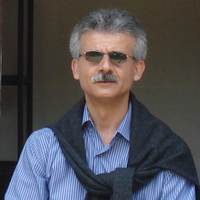

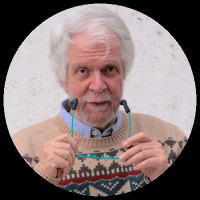

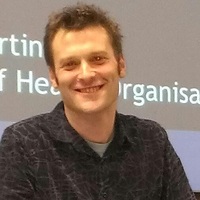

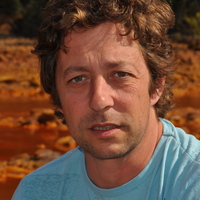
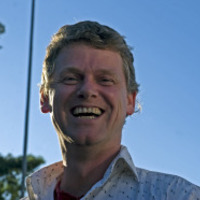
Uploads
Papers by patrizia fortini